How to Protect your Plants from Frost
Snow and hard frost are naturally characteristic of the winter months. Despite their wonder and splendour and the fun they bring to children, they can be a major problem for your treasured garden plants, damaging new growth and killing tender and half-hardy varieties. Low temperatures capable of harming frost-sensitive plants may begin in November and continue through to February and beyond. Typically in the UK, there may be between 7 and 10 nights where the temperatures are below freezing and plants might be damaged.
Frost and freezing conditions cause the water in plant cells to freeze, resulting in the cell wall being damaged. The most obvious, tell-tale signs of frost damage are blackened, distorted or limp growth and a browning of the leaves of evergreen shrubs, which makes them look translucent. These issues are exacerbated by morning sun, causing rapid defrosting which can rupture the cell walls of plants. When the ground becomes frozen, the roots of even the toughest varieties become unable to absorb water, resulting in die-back due to a lack of moisture. Late frosts in spring can also damage flowers and fruit.
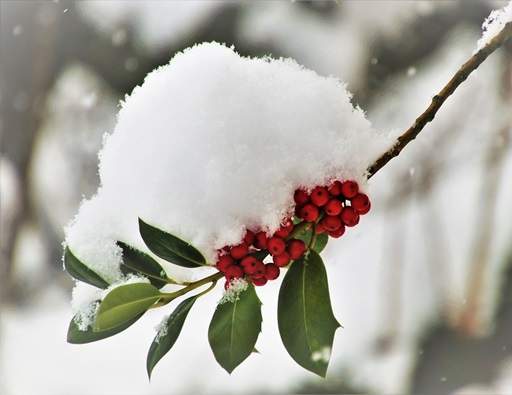
Choosing the right Plant for your Garden
The best way to seek to minimise frost damage is to prevent it in the first instance, rather than desperately seeking a cure after it has happened. It is advisable to follow several guidelines which will help to minimise losses in your garden when prolonged spells of cold weather set in.
The simplest, most effective option is to always choose plants that are reliably hardy in the area where you live. You can determine which plants are appropriate for your location by looking at Hardiness Zones. The best categorisation system to refer is the RHS Hardiness Zones, which range from Fully Hardy (H) to Frost Tender (FT). The RHS revised its rating system after the severe winters of 2009/10 and 2010/11, so the RHS ratings shown below are up-to-date:
|
Zone |
Temperature °C |
Temperature °F |
|
H (Fully Hardy) |
-18 to -12 |
0 to 10 |
|
FH (Frost Hardy) |
-7 to -1 |
20 to 30 |
|
HH (Half Hardy) |
-1 to 4 |
30 to 40 |
|
FT (Frost Tender) |
4 to 10 |
40 to 50 |
All of the plants for sale on our website are categorised by RHS Hardiness Zone.
The steps to using the RHS Hardiness Zone system are, firstly, to establish the expected minimum temperature in your area; the Met Office website in conjunction with conversations with other local gardeners should be able to assist here. Secondly, search for plants with a hardiness categorisation that is appropriate given the zone where you live. The drawback of this approach, specifically the restriction it imposes on your choice of plants, generally outweighs the potential disappointment of losing plants that are not sufficiently protected when the temperature dips below the minimum level they are hardy too.
It is also worth giving consideration to which parts of your garden get the most sunlight by producing a sun chart, noting that sunlight will reach different parts in the winter than in the summer. Just remember that if a plant faces the morning sun, this can cause fast defrosting, resulting in cell wall ruptures and damaging the plant.

Initial Planting and Plant Care Considerations
Below is some initial guidance we can offer that is often overlooked by inexperienced gardeners:
- Always plant Half Hardy and Frost Tender plants in a sheltered position, preferably near a south or west-facing wall, which will absorb heat during the day and radiate it at night. Other good positions include allies out of the wind, against fences and boulders, or under other large shrubs, trees, roof overhangs, eaves or patio extensions (but not in full shade). Eliminating the wind chill factor can substantially reduce the amount of frost damage incurred.
- Apply high-nitrogen fertilisers sparingly because this fosters large amounts of sappy leaf growth that is highly susceptible to frost damage. Always follow the instructions on the multi-purpose fertiliser packet and do not be tempted to over-do it!
- Leaving on mature growth of Half Hardy and Frost Tender plants over the winter months helps to protect central stems. We recommend you avoid pruning back all except the hardiest plant varieties in autumn to prevent new growth from being damaged by frost
- Microclimates called frost ‘pockets’ will occur in the lowest part of your garden, therefore, it is best to select fully hardy plants for these areas. You may wish to design a garden with raised beds to guard against these frost 'pockets', particularly if your garden also has poor soil because raised beds have the added benefit of giving you a fresh start in terms of the quality of the ground you plant into.
- Water your plants evenly throughout the winter. During the coldest months, it is best to water in the morning because wet soil absorbs heat during the day and this also ensures leaves will be dry by the time it starts to get cold at night. As always, don't over-water.
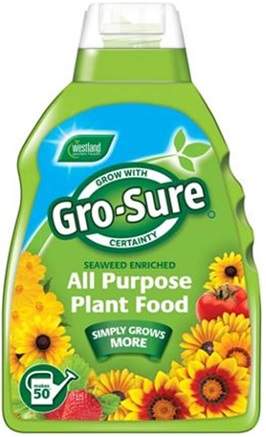
Protecting Different Types of Plants
Some of the types of plants that need protection from frost include tropicals, plants with soft wood, fruit and vegetables, plants in flower and potted plants. As a general rule, It's best to start protecting your plants before dark because they will be most vulnerable at night when temperatures drop and moisture is in the air. Make sure you leave enough time to purchase supplies, cover and insulate your outdoor plants, as well as bringing container grown plants indoors. Being prepared for frost and buying the necessary materials in advance will make your life a lot easier and avoid the need for a last minute rush. Some specific guidance for different types of plants is given below:
- Open Ground Plants - Protect your open ground plants using some of the frost protection materials recommended below. Certain plants can be over-wintered indoors by digging them up prior to the first frost and wrapping up / protecting their roots as necessary. We do not advocate this approach because tampering with the rooms disrupts the plant's growth. Far better is to choose a plant suitable to your hardiness zone at the outset.
- Perennials, Bulbs and Corms - For herbaceous perennials that naturally die back during the winter, bulbs and corms, cover the ground above them with a thick mulch of straw, old leaves or manure so that the soil does not freeze
- Evergreens – With evergreen shrubs, mulch around the base with a thick layer of old leaves straw or manure to ensure the soil stays frost-free. This prevents the soil around their roots from freezing solid, which means they can continue to absorb water when required
- Container Grown Plants – We highly recommend that Frost Tender and Half Hardy plants are grown in containers so they can be taken indoors when cold weather, frost and snow strikes. Wheeling the plants into a garage, sunroom, greenhouse or shed are all viable solutions. If you are eager to continue growing a tender variety that cannot be brought indoors, consider taking cuttings and storing them in water in your greenhouse or outbuilding. An attempt to root them could then be made in the spring. Selecting frost-proof containers is the best way to ensure your pots and tubs do not crack when the frost strikes, and storing them in an outbuilding for protection also helps. ‘Pot feet’ should be used to prevent the bottoms of container grown plants from getting waterlogged where they cannot be moved indoors. If there is no viable option to bring your container plants indoors, cluster them close together in a sheltered spot near the house.
- Cordylines and Tree Ferns – The vital part of tree ferns that must be protected is the crown – the upper part of the trunk from which the leaves disperse from. Leaves should be carefully secured in bunches and covered with ample amounts of protective fleece to provide insulation. An alternative is to position straw around the leaves and upper trunk in bags or netting. When the frost is particularly harsh, consider placing a lamp designed for outdoor use within the interior of the tree. Such lamps can produce enough warmth to reduce frost damage. Non-LED holiday lights can be used instead to achieve the same result, providing you are very careful they do not touch any other insulative materials being used.
- Ground Cover Plants – Ground cover and low-growing varieties can be protected by positioning a layer or grit or gravel around them; this ensures that water drains away quickly. They should also be covered with a polythene clothe or a sheet of glass to contain heat.
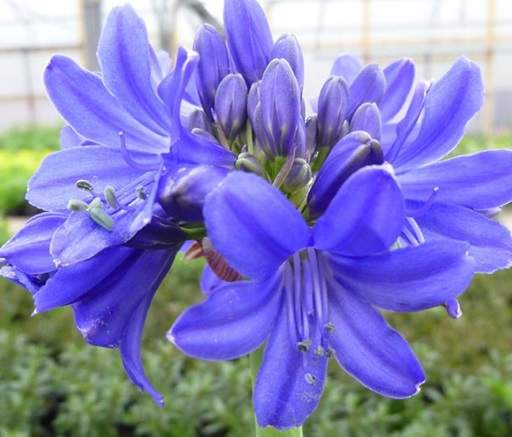
Recommended Materials to Protect your Plants
There is a wide range of materials that can be used to help shelter your plants from the frost, many of which are likely to be already readily available around the house. A comprehensive list is provided below.
- Permeable Fleece - use a layer or several layers of protective fleece to provide insulation. This should be made of a permeable fabric to allow the plant to ‘breathe’ and should ideally be positioned on a frame above the tender plants before the frost hits.
- Straw or Bracken Leaves - this provides a natural alternative that can be wedged in thick chunks between sections of chicken wire and positioned around plants to provide insulation.
- Fabric - if the frost is only expected to last for a short time and you do not want the hassle of purchasing special frost protection materials, consider placing an old blanket, spare bed sheet, lightweight drop cloth, thin towel or other large scrap of fabric over or around your plants and securing it with stones on the ground or pins (being careful not the crush your plants). Providing it is taken off during the day, your plants will get the light and air they need. Avoid using heavy fabrics as they may sag and damage the plants underneath.
- Layered Newspaper - lightweight, breathable and insulative, old newspaper is an excellent low-cost source of frost protection. Wrap newspaper around the containers of potted plans to protect the soil from freezing. 'Tenting' newspaper over smaller plants using stones to keep it weighted down is also a viable option, although problems are often experienced with the newspaper blowing away if there are high winds.
- Cut-off Plastic Bottles - large (1 or 2 litres) plastic drinks or milk containers are perfect for embedding into the soil around small plants and seedlings to provide protection
- Clothes Hangars (to create wireframes) - one of the difficulties in applying insulating materials around plants is often establishing a frame to secure them to. By bending clothes hangars and positioning them in an arch at the top of the plant, it's possible to create a wireframe from which your choice of insulative material can be hung. It's best to ensure, as far as possible, that the insulative material hangs all the way to the ground to ensure maximal heat retention.
- Wicker Baskets - inverting a large wicker basket and placing it over the plant you're looking to protect can offer a helpful quick solution, over which further insulation can be secured. Alternative sturdy containers achieve the same result.
- Mulching - A thick layer of bark, rotted leaves or other organic material can act as an excellent insulator to protect the roots of your plants. Sometimes it is the freeze and thaw cycle of the soil that damages the plant, more so than the cold temperature above the surface. In fact, certain plants such as rose bushes and strawberry plants can be over-wintered by covering them completely with mulch. Just don't forget to rake the mulch away again once the danger of frost has passed.
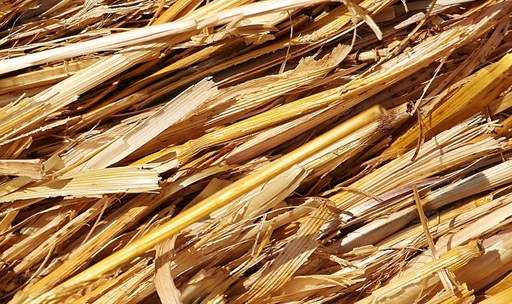
With the exception of protecting very small plants and seedlings (where cut off plastic bottles are appropriate), we do not recommend you use plastic as an insulative material. Although plastic is often used, it is not breathable and can trap moisture, increasing the risk of the plant being damaged. Whatever protective material is used, remember to remove it again when the temperature rises the next day, otherwise, the plant may fall victim to suffocation.
Build a cold frame or greenhouse
Many gardeners find that the option of building or purchasing a cold frame proves attractive and worthwhile. A cold frame is essentially a transparent-roofed enclosure, built reasonably low to the ground in order to protect plants from the cold or excessively wet weather. A temporary cold frame can be constructed by bending slender, malleable metal rods into loops and inserting the ends into the ground across a garden row. This creates a frame over which a sheet of clear plastic can be laid to protect the plants inside. A more permanent cold frame consists of a hinged window on one side of an open-bottomed wooden box.
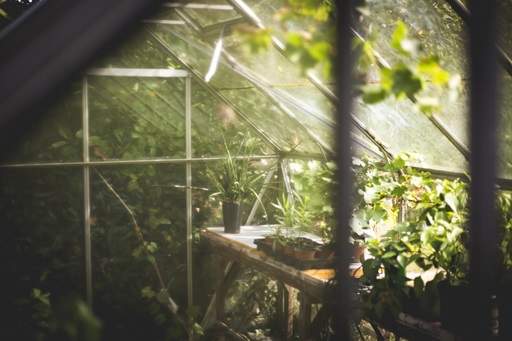
Damaged Plants
Although prevention is definitely the best solution, if plants do get frost damaged they may recover given time. To give your plants the best chance of recovery, follow the steps below:
- Cover plants with a layer of black plastic (ideally with multiple pin-pricks made across the plastic sheet to allow the plant to breathe) during the morning to block out the worst of the morning sun. At mid-day, ensure the plastic is removed.
- Encourage the development of fresh, new shoots by cutting back frost-nipped stems to a new bud or node once the risk of frost has passed. Until this time, or until they start to decay, leave them on the plant to protect lower foliage
- Apply the recommended amount of a multi-purpose NPK fertiliser (nitrogen, phosphorus and potassium) to your plants to encourage strong growth; do not overdo it as this will result in excessive sappy growth, making your plants more vulnerable. Mulching with organic matter such as rotted mature, mashed up twigs and bark, peat, moss, old shredded leaves and composted lawn clippings can also be used to provide a more natural, slower release source of nutrition.
- Move damaged, tender plants to a greenhouse. Providing they have not experienced extended frosty periods, they may recover if given the necessary warmth, protection and nutrients
- Don't give up on your damaged plants too soon. Plants can be remarkably resilient, even if initially they show little sign of life. Wait until the weather warms up in the spring to provide an opportunity for new shoots to develop. If the plant re-grows from the base, cut out the old, dead stems. Only if no new growth has been seen by the end of spring should the plant be considered a dead specimen and removed. In this case, replace with a hardier variety.
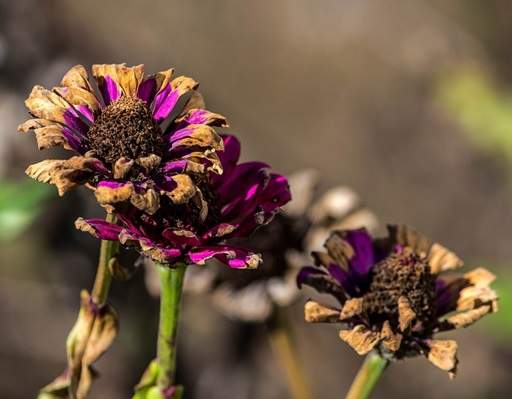
Perennials Grown as Annuals
Annuals are plants that die back in the winter each year, but then re-grow the following growing season from their bulb or corn. Perennials are often grown as annuals in colder climates such as the UK, so do not necessarily think the plant has been permanently lost if it dies back for the winter. If you wish, you can extend the growing season for some annual perennials by sheltering their growing position and container growing them indoors, or inside a greenhouse.
We would encourage you to talk to other local gardeners about what to expect from perennials plants during the winter in your area. Alternatively, visit our garden centre in Staffordshire; our friendly staff would be more than happy to assist with your questions.
Dealing with Snow
Finally, some guidance about removing snow from atop your plants and clearing it from your garden. Snow can actually be a help and a hindrance. On the one hand, it has insulative properties, which protect your plants from the frost. However, the weight of thick layers of snow can also cause branches to snap. Be ready to follow the best-practice steps below when snow arrives:
- Remove excess snow from plants by wiping and shaking it off
- Sweep snow from the tops of cold frames and roofs of greenhouses to prevent possible damage under the weight
- Use twine or string to hold the branches of young trees and conifers in place
- Do not walk over your snow-covered lawn. Doing so will leave unsightly marks and damage the grass underneath
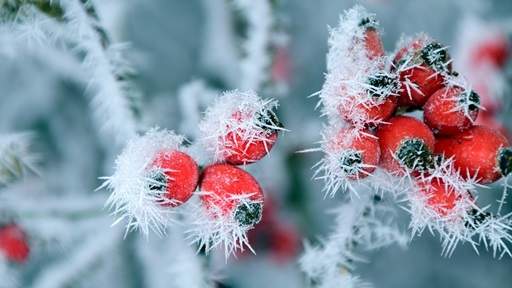
Share this page:
